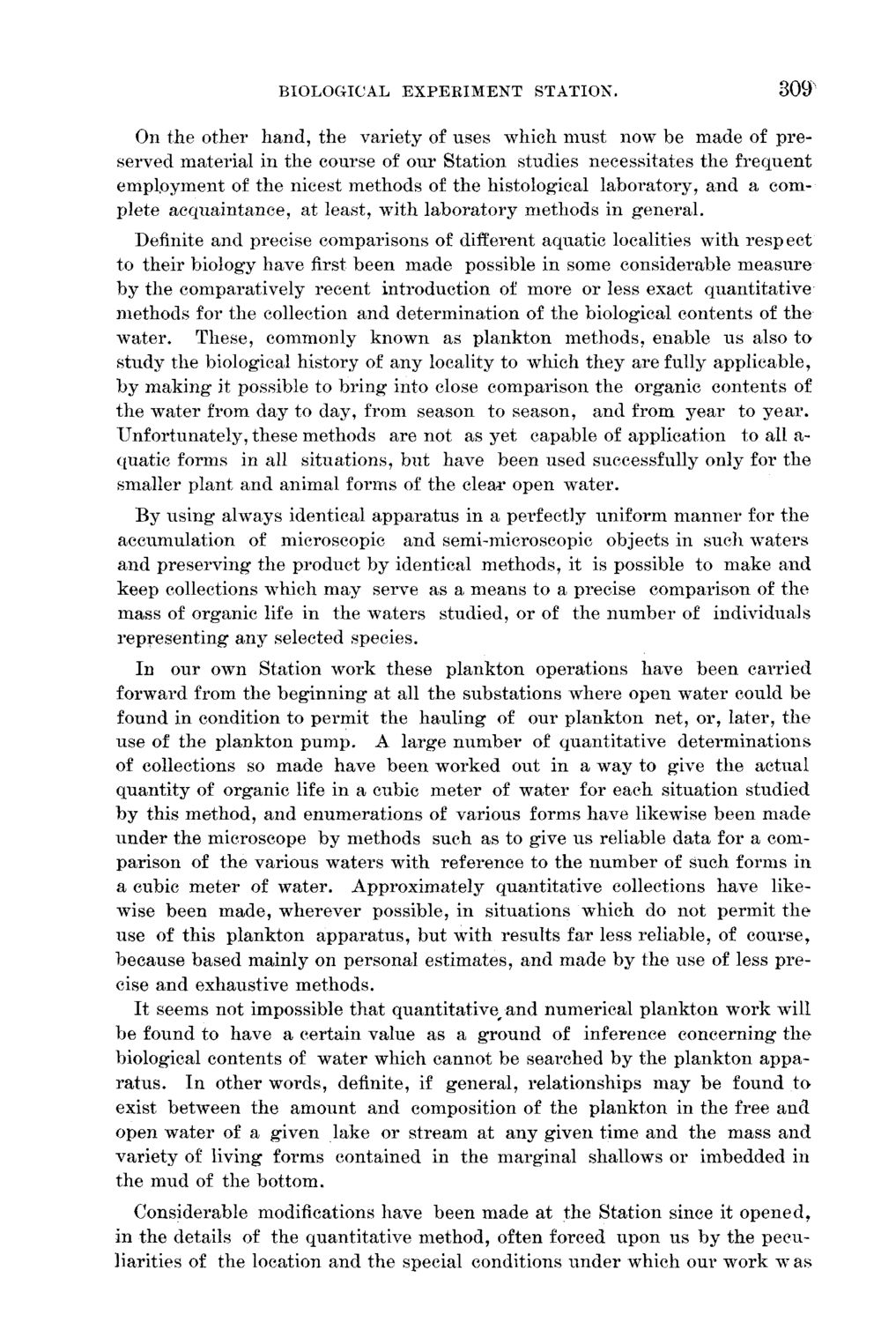| |
| |
Caption: Board of Trustees Minutes - 1896
This is a reduced-resolution page image for fast online browsing.

EXTRACTED TEXT FROM PAGE:
BIOLOGICAL E X P E R I M E N T STATION. 309 On the other hand, the variety of uses which must now be made of preserved material in the course of our Station studies necessitates the frequent employment of the nicest methods of the histological laboratory, and a complete acquaintance, at least, with laboratory methods in general. Definite and precise comparisons of different aquatic localities with respect to their biology have first been made possible in some considerable measure by the comparatively recent introduction of more or less exact quantitative methods for the collection and determination of the biological contents of the water. These, commonly known as plankton methods, enable us also to study the biological history of any locality to which they are fully applicable, by making it possible to bring into close comparison the organic contents of the water from day to day, from season to season, and from year to year. Unfortunately, these methods are not as yet capable of application to all aquatic forms in all situations, but have been used successfully only for the smaller plant and animal forms of the clear open water. By using always identical apparatus in a perfectly uniform manner for the accumulation of microscopic and semi-microscopic objects in such waters and preserving the product by identical methods, it is possible to make and keep collections which may serve as a means to a precise comparison of the mass of organic life in the waters studied, or of the number of individuals representing any selected species. In our own Station work these plankton operations have been carried forward from the beginning at all the substations where open water could be found in condition to permit the hauling of our plankton net, or, later, the use of the plankton pump. A large number of quantitative determinations of collections so made have been worked out in a way to give the actual quantity of organic life in a cubic meter of water for each situation studied by this method, and enumerations of various forms have likewise been made under the microscope by methods such as to give us reliable data for a comparison of the various waters with reference to the number of such forms in a cubic meter of water. Approximately quantitative collections have likewise been made, wherever possible, in situations which do not permit the use of this plankton apparatus, but with results far less reliable, of course, because based mainly on personal estimates, and made by the use of less precise and exhaustive methods. It seems not impossible that quantitative,-and numerical plankton work will be found to have a certain value as a ground of inference concerning the biological contents of water which cannot be searched by the plankton apparatus. In other words, definite, if general, relationships may be found to exist between the amount and composition of the plankton in the free and open water of a given lake or stream at any given time and the mass and variety of living forms contained in the marginal shallows or imbedded in the mud of the bottom. Considerable modifications have been made at the Station since it opened, in the details of the quantitative method, often forced upon us by the peculiarities of the location and the special conditions under which our work w as
| |